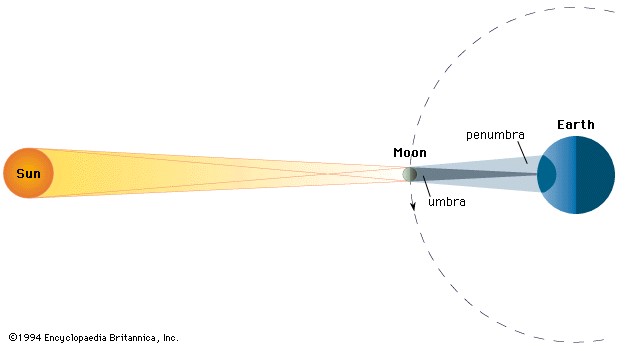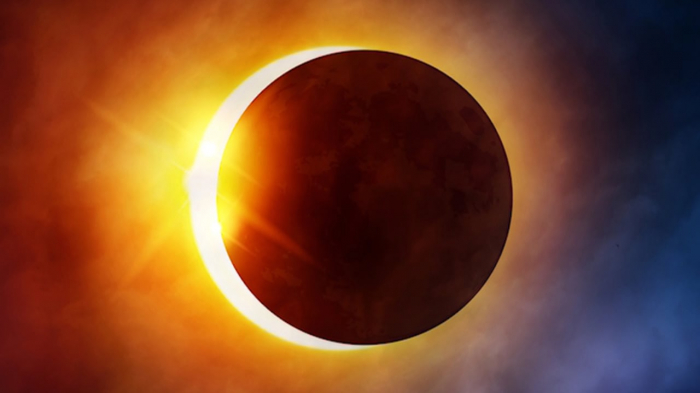Solar eclipses may be classified as either total, in which the Moon completely covers the Sun, or annular, in which the Moon obscures all but an outer ring of the Sun. Whether an eclipse is total or annular depends on the distance between these three objects. Earth travels in an elliptical orbit around the Sun, and the Moon travels in an elliptical orbit around Earth, so the distance between these celestial bodies changes. When the Sun is nearest to Earth and the Moon is at or near its greatest distance, the Moon appears smaller than the Sun in the sky. When an eclipse of the Sun happens in this situation, the Moon will not appear large enough to cover the disk of the Sun completely, and a rim or ring of light will remain visible in the sky. This is an annular eclipse.

Encyclopædia Britannica, Inc.
There are no annular lunar eclipses because Earth is much bigger than the Moon, and its shadow will never be small enough to leave a ring. However, the Moon does experience total eclipses. If the eclipse is a total lunar eclipse, the Moon will pass through the umbra (area of total shadow) created by Earth over the course of about two hours. Viewers will notice that the Moon does not typically go completely dark; it often takes on a red color, because the redder parts of sunlight that penetrate Earth’s atmosphere are refracted into the umbra, and this light reaches the Moon.
Both solar and lunar eclipses may also occur as partial eclipses. For a solar eclipse this often depends upon where the viewer observes the event. A partial eclipse may be seen by viewers who stand outside of the region of shadow created by the umbra—the path of totality—but who remain within the large region of shadow covered by the penumbra, a region of lesser shadow where some light still penetrates. A partial eclipse of the Sun also results when the Moon’s penumbra falls on Earth but its umbra does not. A partial eclipse of the Moon occurs when the Moon passes through only part of Earth’s umbra or only its penumbra. (However, penumbral lunar eclipses are difficult to spot because Earth’s penumbra is very faint.) Since the Moon is much smaller than Earth, there is no path of totality in a lunar eclipse. The eclipse will be visible to any observer on the night side of Earth when the eclipse occurs.

Encyclopædia Britannica, Inc.
Total solar eclipses take place somewhere on the planet about every 18 months or so, but the average frequency of the event for any random point on the planet is roughly once in almost 400 years. Across the planet, however, solar eclipses are actually more frequent than lunar ones. For example, total and annular eclipses occur every five or six months. Lunar eclipses, by contrast, happen about once per year at any given location on the planet. Nevertheless, since solar eclipses can be seen from only a very limited region of Earth at a time and lunar eclipses can be seen by an entire hemisphere, solar eclipses may seem less frequent.
Read the original article on britannica.com.
More about: solareclipse lunareclipse
















































